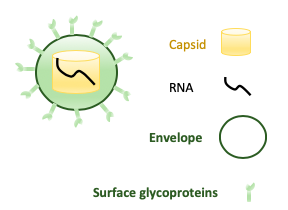
28 Mar THE NEW CORONA VIRUS
Corona viruses have been discovered since the late 1960s. Some human coronaviruses are the human-coronavirus-229E and human-coronavirus-OC43 which are responsible for the common cold.
The name “Coronavirus” is derived from the Latin word “Corona” standing for crown. This is due to the virus’s characteristic appearance. The viral spikes, which are proteins located on the outer surface of the virus, create a special morphology reminiscent to a crown. They are glycoproteins allowing and facilitating the attachment of the virus on the host cell.
Viruses have genetic material that can be in the form of DNA or RNA. These microbes have a type of a protein structure known as a capsid, which protects the genetic material. Some viruses can have additional structures, such as a special envelope encapsulating the capsid (e.g. the novel coronavirus SARS-CoV-2). These supplemental structures can facilitate several virus’s functions (e.g. attachment to the host/replication etc.).
SARS-CoV-2 (novel corona virus) is a large RNA virus that also has a long genetic material (around 30kb). After the SARS-CoV-2 has entered a cell, the RNA genome is deposited in the host cell’s cytoplasm and can be translated immediately. This virus has a positive RNA (sense RNA). Positive-sense RNA (5′-to-3′) means that a particular viral RNA sequence can be translated directly to viral proteins by the host cell machinery, as it cannot be distinguished from the host’s mRNA, which has the same polarity (5’-to-3’: positive strand). For this reason, these types of virions do not need to package RNA polymerase.
Last but not least, SARS-CoV-2 is the correct name of the virus, while COVID-19 is the name of the disease caused by SARS-CoV2.

- Image 1. A simplified sketch of a coronavirus. The illustration is not to scale. Actual size 50–200 nanometers in diameter. (Courtesy: The bio teacher).



Sorry, the comment form is closed at this time.